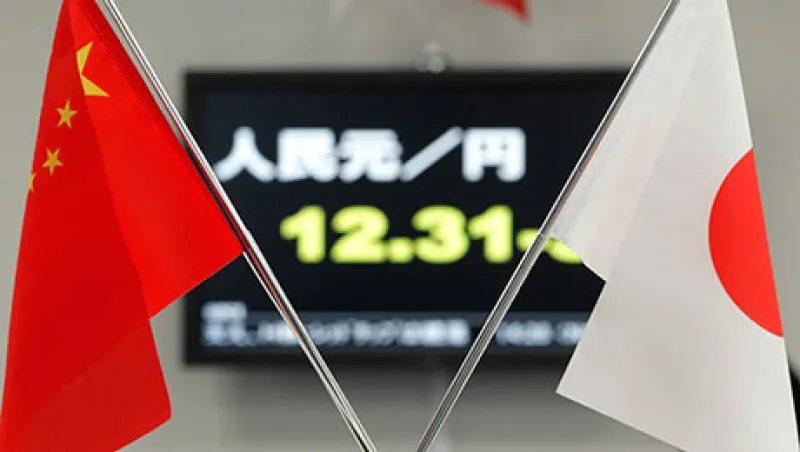When Japan surpassed China as the biggest foreign holder of U.S. Treasuries in February, plenty of chatter arose in financial circles about the development. But it was really much ado about nothing.
Although China reemerged as No. 1 in March, it matters little who stands on top, analysts say. The real issue is that, as the two countries step away from intervening in the foreign exchange market to depress their currencies, both are reducing their Treasury purchases — and in China’s case actually selling a bit.
China’s Treasury portfolio slid 1 percent to $1.261 billion in March from $1.272 billion a year earlier, while Japan’s rose just 2 percent to $1.227 billion from $1.2 billion.
As for the question of which country holds more, “it’s like one of those videos at Yankee stadium that show [fake] races between different subway lines,” says Robert Sinche, a global strategist at Amherst Pierpont Securities, a New York fixed-income broker-dealer.
How did Japan edge ahead of China in February? Apparently, a portion of China’s Treasury holdings had been temporarily warehoused in Belgium in that month, and they were officially counted as part of that country’s monthly account, says Shyam Rajan, a U.S. rate strategist at Bank of America Merrill Lynch. Those Treasuries were then probably moved to the New York Federal Reserve in March and are now correctly attributed to China. In any case, the value of Chinese Treasury holdings has gradually been falling over the past year, while the growth of Japan’s holdings has slowed.
Prior to that, China’s Treasury holdings had mounted for years as its central bank built up dollar reserves to reduce the yuan’s strength. China then used those dollars to buy Treasuries. China now has less need to restrain the yuan. “It looks like capital flows into China at least have slowed, if not reversed,” Sinche says. “The need to intervene has subsided, so in general they’re buying fewer Treasuries.”
Japan’s Treasury purchases had accelerated over the past three and a half years, as the Bank of Japan (BOJ) similarly intervened to depress the yen and use the dollar proceeds to buy U.S. government debt. Now the yen’s weakness against the dollar — it’s near an eight-year low — makes it unnecessary for the BOJ to buy more dollars.
Looking at foreign central banks as a whole, Sinche says, “The global financial system is more balanced, so you don’t need currency intervention as much, and you don’t need Treasuries as much.”
Meanwhile, U.S. debt issuance has dropped, with the budget deficit narrowing to $483 billion in the fiscal year ended September 30, 2014, from $1.4 trillion in 2009. “We need them [Chinese and Japanese Treasury purchases] less, and that’s why the numbers aren’t growing so much,” Rajan says.
In China the central bank does most of the Treasury buying; in Japan, despite intervention by the BOJ, it’s largely the private sector — insurance funds, pension funds and banks.
“From the late 1990s until the financial crisis, there was a notion that the U.S. was beholden to foreign purchases of Treasuries — that China and Japan had us by the throat,” says David Gilmore, a partner at currency research firm Foreign Exchange Analytics in Essex, Connecticut. “If they threatened not to buy Treasuries, it would be lights-out for the market and funding the government deficit.” But that wasn’t true then and is even less so now, Gilmore notes.
Analysts expect the trend of China and Japan making smaller Treasury purchases to continue. The dollar has gained strength and will probably appreciate further as the Federal Reserve moves closer to raising interest rates, says Sinche. Fed chair Janet Yellen indicated on May 22 that an increase will likely come later this year.
“We’ll have less investment from foreign central banks, who tend to buy and hold, and the Treasury market will be much more impacted by private investors, who tend to shift positions much more rapidly,” Sinche says.
To be sure, he and others don’t foresee a significant drop in Chinese or Japanese holdings. “Given that the world is awash with sketchy debtors, one can see why Chinese investors would look to U.S. Treasuries as a haven,” Gilmore says.
And Japanese investors continue to prefer Treasuries over European government bonds because of their attractive yield spreads, Rajan notes. The ten-year Treasury note yields 2.15 percent, compared with 0.54 percent for ten-year German government bonds.







